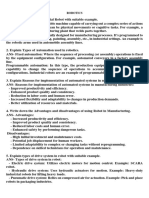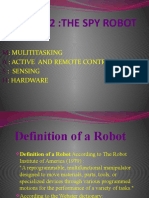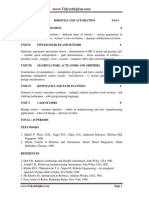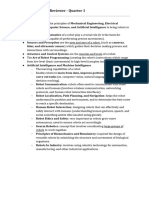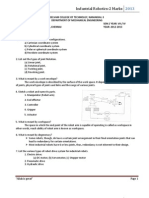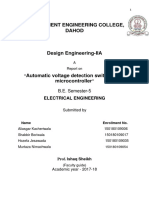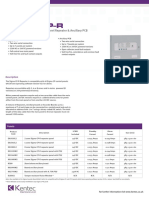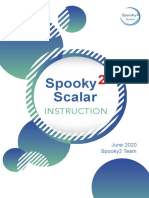Key Pointers in Robotics-8
_____________________________________________________________________________________
1. Actuator is a type of component that changes energy into motion. Motors are example of this
type.
2. It is the process of making adjustments to certain numbers or components to get the best
results from a circuit or program is called Calibration.
3. Datatype is a classification system that determines what values a particular constant, variable,
or array will hold. The float, long and boolean are all types that can be used in the Arduino
Software (IDE).
4. EEPROM is a type of memory that retains its data without power, like a Read Only Memory,
and that can be erased and written.
5. The Circuit is a circular path from a power supply, through a load, and then back again to the
other end of the power supply.
6. Boot loader is a special piece of code that the microcontroller executes at power-up or under
specific conditions and takes care of the loading of the code into Flash memory.
7. Debugging is a process of going through a circuit or code, and finding errors (also referred as
“bugs”), until the expected behavior is achieved.
8. What is known to be a ratio indicating the amount of time over a certain period that a
component is turned on? Example, when using a PWM value of 127 (out of a total of 256), you
have 50% of this is known as Duty cycle.
9. EDBG is a chip that implements a composite USB device and is consisting of three interfaces.
10. Back-voltage -A type of voltage that pushes back against the current that created it. It can be
created by motors spinning down.
11. ATSAMW25 allows you to build low power solutions for Internet of Things.
12. A Compensator is a remote compliance center device using three to twelve elastomeric shear
pads to aid in the insertion of peg-in-hole applications.
13. The boundary between the robot and machines, transfer lines, or parts outside immediate
environment and the root must communicate with these items through input/output signals
provided by sensors called is Interface.
14. Restricted Envelope Space is the portion of the maximum envelope to which a robot is
restricted by limiting devices.
15. This is also known as an opto-isolator, photo-coupler, photo-isolator, photo-switch, and opto-
switch. A LED is combined in a sealed case with a phototransistor is known as Optocoupler.
�16. USB port -The function of this is to connect the board with your computer, and also to
exchange data with it.
17. The markings that appear quite a bit in electronics to indicate the pins responsible for serial
communication is known as TX/RX LEDs
18. Interlock is an arrangement whereby the operation of one control or mechanism brings about
or prevents the operation of another.
19. The hardware chip that takes care of all the calculations required by the modern
cryptographic standards is known as a/n Cryptochip.
20. The Manipulator is the mechanical arm mechanism, consisting of a series of links and joints,
which accomplishes the motion of an object through space.
ESP Story Format




